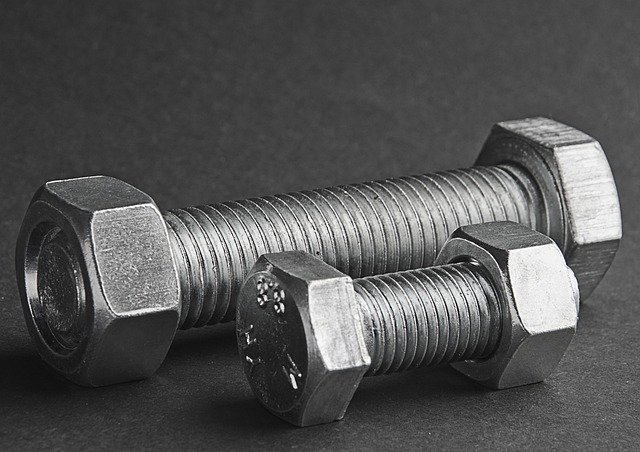Quick-release mounts for powered tool security
Quick-release mounts offer a practical way to secure powered tools inside vehicles, workshops, and storage cases while improving organization and accessibility. This article outlines how mounts integrate with foam, dividers, and compartments, and covers protection, routing, maintenance, and a selection checklist to consider for safe tool management.

Quick-release mounts can transform how powered tools are stored, transported, and deployed. By combining mechanical fasteners with thoughtful layout elements, these mounts improve security and accessibility without adding unnecessary complexity. This article explains how mounts interact with storage systems, foam inserts, dividers, and compartments, and discusses corrosion prevention, ergonomics, labeling, and maintenance to help professionals and hobbyists create a safer, more organized tool environment.
How do quick-release mounts affect storage and organization?
Quick-release mounts streamline storage by giving each powered tool a fixed position. Anchoring tools to a dedicated point prevents shifting during transport and reduces the time spent searching through crowded compartments. When mounts are paired with structured organization—such as labeled racks, compartments, and foam cutouts—users can achieve a repeatable system that speeds tool retrieval and simplifies inventory checks. Thoughtful placement also ensures weight is distributed evenly within storage boxes or vehicle cabinets, contributing to safer handling and reduced wear on hinges and latches.
How do mounts support portability and accessibility?
Portability improves when quick-release systems allow rapid removal and reattachment of tools without extra hardware or complicated procedures. Mounts designed for easy one-handed operation enhance accessibility on job sites where efficiency matters. Integrating mounts with ergonomic handles, routing for charging cables, and pathways for securing cords makes it practical to move tools between workstations or vehicles. Properly positioned mounts also reduce the need to lift tools awkwardly, lowering the risk of strain and making day-to-day use more comfortable.
What protection features (foam, dividers, compartments) should be used?
Combining quick-release mounts with foam inserts, dividers, and dedicated compartments increases protection during transport and storage. High-density foam can be CNC-cut or hand-cut to cradle tool housings, absorb shocks, and prevent surface damage. Dividers keep accessories and batteries separate to avoid abrasion and accidental activation. Compartments sized for chargers, spare parts, and consumables keep small items secure and organized. Selecting the right foam density and divider configuration balances protection with ease of access.
How can corrosion, routing, and maintenance be managed?
Preventing corrosion and ensuring reliable routing of cables and batteries are essential for long-term tool performance. Use corrosion-resistant mount materials like stainless steel or treated aluminum for environments with humidity or salt exposure. Routing channels or clips keep power leads and hoses from bending sharply or rubbing against edges, reducing wear. Regular maintenance should include checking mounting fasteners, cleaning contacts, and inspecting protective coatings. A basic maintenance schedule—clean, inspect, tighten, and lubricate where applicable—extends both tool and mount lifespan.
How do ergonomics, labeling, and security integrate with mounts?
Ergonomics and security work together when mounts are placed at reachable heights and use retention methods that balance ease of release with secure locking. Clear labeling for each mount and compartment speeds identification and supports standardized workflows across teams. For higher security needs, mounts can incorporate locks or tamper-evident fasteners while still allowing rapid authorized release. Combining intuitive placement, visible labels, and appropriate locking offers a compromise between accessibility for users and protection against theft or misuse.
What compartments and routing considerations improve safety and usability?
Designing compartments with routing in mind prevents tangled cables and accidental activation. Include dedicated channels for battery charging, with ventilation and space for thermal expansion. Separate compartments for combustible consumables or flammable liquids should meet safety guidelines and be isolated from power sources. Compartment layouts that allow airflow and straightforward access to filters, vents, or battery packs support routine maintenance tasks. Thoughtful routing reduces trip hazards and keeps workspaces cleaner and safer.
Selection checklist for quick-release mounts
- Confirm compatibility with each powered tool’s shape and weight.
- Choose mount materials and coatings resistant to expected environmental conditions.
- Plan foam inserts and dividers to prevent movement and contact damage.
- Ensure mounts allow ergonomic handling and one-handed release if required.
- Incorporate labeling for rapid identification and inventory routines.
- Provide routing paths for cables and charging, and verify ventilation where batteries charge.
- Establish a maintenance schedule for fasteners, coatings, and contact points.
- Consider added security features if theft or unauthorized use is a concern.
Quick-release mounts are a practical component of a secure, organized powered tool system. When combined with foam, dividers, clear labeling, corrosion-resistant materials, and attention to ergonomics and routing, they improve accessibility and protection without compromising portability. A systematic approach—mapping storage needs, selecting compatible mounts, and maintaining the system—helps preserve tool function and extends equipment life.






